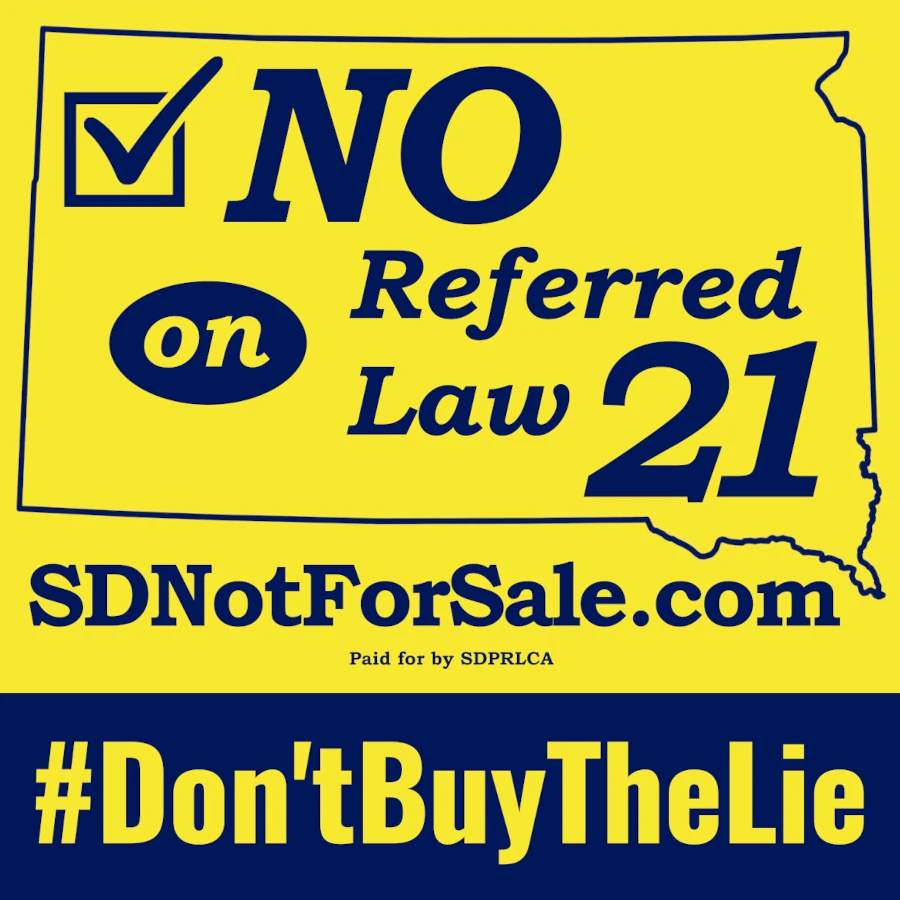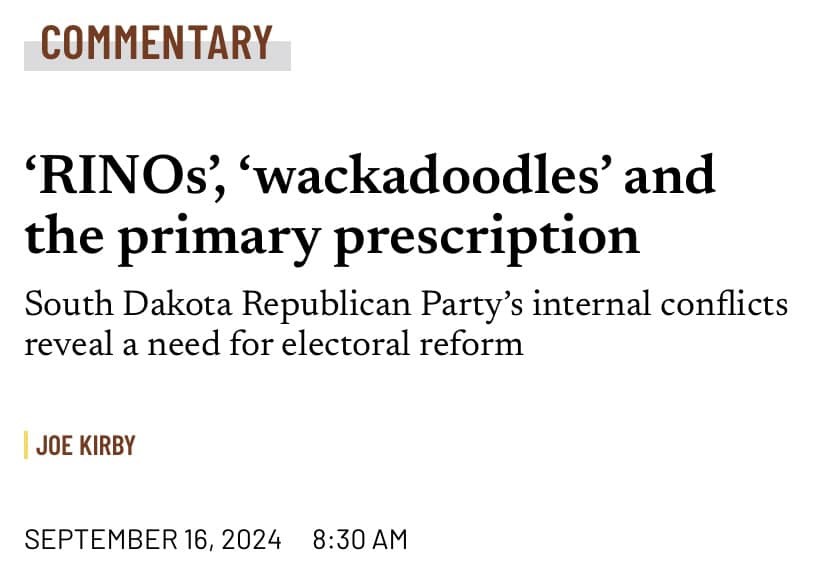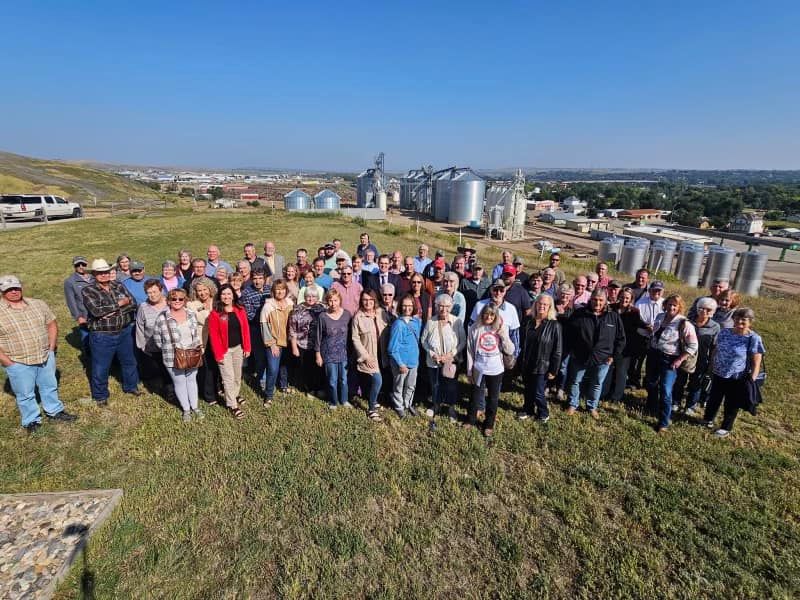Via Julie Korth on social media…
The results of a recent poll conducted by SD Property Rights and Local Control Alliance reveal a significant shift in public opinion after voters were informed about the law’s potential consequences on property rights, local governance, and the process by which it was created.
Initially, the poll indicated that South Dakota voters were almost evenly divided on Referred Law 21, with 23.9% in support, 24.4% in opposition, and a notable 51.6% of voters undecided.
However, once voters were educated about the implications of the law — specifically, that a ‘yes’ vote would strip property rights through eminent domain, remove local control from South Dakota communities, and that the law was crafted through backroom deals — there was a dramatic shift in voter sentiment.
Support for Referred Law 21 dropped from 24% to 9.1%, while opposition surged from 24% to 68%. The percentage of undecided voters decreased substantially, from 51.6% to 22.9%.
Initially, the poll indicated that South Dakota voters were almost evenly divided on Referred Law 21, with 23.9% in support, 24.4% in opposition, and a notable 51.6% of voters undecided.
However, once voters were educated about the implications of the law — specifically, that a ‘yes’ vote would strip property rights through eminent domain, remove local control from South Dakota communities, and that the law was crafted through backroom deals — there was a dramatic shift in voter sentiment.
Support for Referred Law 21 dropped from 24% to 9.1%, while opposition surged from 24% to 68%. The percentage of undecided voters decreased substantially, from 51.6% to 22.9%.
The poll also provided a detailed partisan breakdown, illustrating how different voter groups responded both before and after being informed.
Among Republicans, 24% initially supported Referred Law 21, 27% opposed it, and 49% were undecided. After learning more about the law, Republican support plummeted to 8%, with opposition rising sharply to 72%, and 20% remaining undecided.
Democrats showed a similar trend, with 26% supporting the law initially, 22% opposing it, and 52% undecided. Once informed, support among Democrats dropped to 11%, opposition increased to 64%, and 25% were undecided.
Among voters with no party affiliation, 20% initially supported Referred Law 21, 22% opposed it, and 58% were undecided. After receiving more information, support among unaffiliated voters fell to 9%, with opposition climbing to 63%, and 27% remaining undecided.
Among Republicans, 24% initially supported Referred Law 21, 27% opposed it, and 49% were undecided. After learning more about the law, Republican support plummeted to 8%, with opposition rising sharply to 72%, and 20% remaining undecided.
Democrats showed a similar trend, with 26% supporting the law initially, 22% opposing it, and 52% undecided. Once informed, support among Democrats dropped to 11%, opposition increased to 64%, and 25% were undecided.
Among voters with no party affiliation, 20% initially supported Referred Law 21, 22% opposed it, and 58% were undecided. After receiving more information, support among unaffiliated voters fell to 9%, with opposition climbing to 63%, and 27% remaining undecided.
When voters were provided with specific details about Referred Law 21 and asked how each point would impact their vote, the results were telling.
Upon learning that the law would strip property rights through eminent domain, 70% of voters stated they were less likely to support it, while 23% were more likely to support it, and 7% indicated that this information had no impact on their decision.
Similarly, when voters were informed that Referred Law 21 would remove local control from South Dakota communities, 70% were less likely to support it, 25% were more likely to support it, and 5% said it had no impact on their decision.
Finally, when voters learned that Referred Law 21 was formed through backroom deals, 73% were less likely to support it, 22% were more likely to support it, and 5% responded that this information had no effect on their decision.
Upon learning that the law would strip property rights through eminent domain, 70% of voters stated they were less likely to support it, while 23% were more likely to support it, and 7% indicated that this information had no impact on their decision.
Similarly, when voters were informed that Referred Law 21 would remove local control from South Dakota communities, 70% were less likely to support it, 25% were more likely to support it, and 5% said it had no impact on their decision.
Finally, when voters learned that Referred Law 21 was formed through backroom deals, 73% were less likely to support it, 22% were more likely to support it, and 5% responded that this information had no effect on their decision.
The results of this poll are a clear indication that South Dakotans value their property rights and local control.
The fact that support for Referred Law 21 plummets from 24% to just 9% after voters learn about its true implications shows that this legislation is out of step with the values of our state. South Dakotans are rejecting the idea of backroom deals that threaten their property rights and their communities.
SD Property Rights and Local Control Alliance is committed to ensuring that voters are fully informed and empowered to protect their rights. We will continue to work tirelessly to defeat this dangerous legislation at the polls.
South Dakota is NOT FOR SALE!
The fact that support for Referred Law 21 plummets from 24% to just 9% after voters learn about its true implications shows that this legislation is out of step with the values of our state. South Dakotans are rejecting the idea of backroom deals that threaten their property rights and their communities.
SD Property Rights and Local Control Alliance is committed to ensuring that voters are fully informed and empowered to protect their rights. We will continue to work tirelessly to defeat this dangerous legislation at the polls.
South Dakota is NOT FOR SALE!







